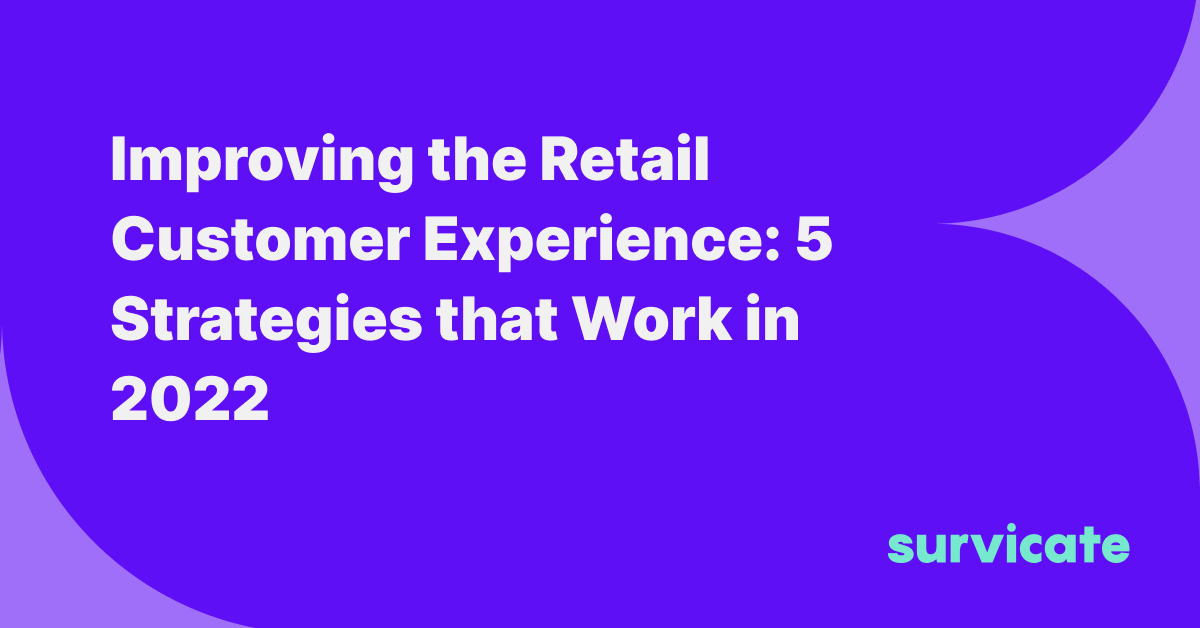B2B is generally perceived as boring - but only if you do it the wrong way. The lines between B2C and B2B are getting blurrier with each year, and B2B customers now expect the same levels of amazing customer experience that B2C companies offer.
This piece will provide you only with the most relevant information about the B2B customer experience transformation and strategies for improving it. The best customer service is a smooth ride from beginning to end.
By following these steps, you'll be well on your way to exceeding your B2B customers' expectations and fostering long-term customer loyalty and satisfaction. So let's get started!
What is the B2B customer experience, and what makes it different from B2C?
In a nutshell:
In business, the customer experience (CX) is the sum of all interactions a customer has with a company. From awareness and discovery to post-purchase support and advocacy.
How does a good customer experience truly come about? Omnichannel experience. Speed. Convenience. Consistency. Friendliness. And one big factor – making technology seem more human.
Customer experience in B2B vs customer experience in B2C- key differences
- In B2B, the decision-making process is usually more complex, with multiple stakeholders involved.
- B2B sales cycles are typically longer and more layered than in B2C, so building trust and developing relationships are essential. Moreover, it can sometimes take months to close a sale.
- B2B customers often have higher expectations for customer service and support since they're relying on your product to help them run their own businesses. The more they risk, the more they demand.
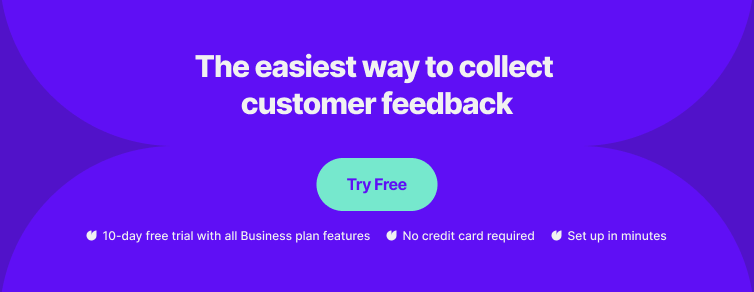
Why does customer experience matter in B2B?
The days of relying on the quality of your product alone are over, whether it's B2C or B2B. Consumers today want more than just high-quality products. They also desire an experience. And will be unforgiving if you don’t deliver it in the way they want.
It’s not enough to be good at what you do. You must also be good at how you do it.
More specifically:
- 86% of buyers are willing to pay more for a great customer experience.
- Over 80% of B2B buyers want and expect a B2C-like buying experience.
- A strong CX can build brand loyalty, drive revenue growth, and create long-term customer relationships.
So it’s definitely worth the effort.
How to create an amazing customer experience in B2B - 10 Actionable Steps
While 80% of companies believe they deliver a “superior customer experience,” only 8% of their customers agree. The disconnect is even starker when you look at the expectations of today’s customers.
In fact, 96% of customers say they would take their business elsewhere if they received a poor customer experience. It means that there are almost no exceptions.
So how can B2B companies close the gap and deliver the kind of customer experience that today’s customers demand?
Step 1: Regularly collect and act on customer feedback
Let’s start from the beginning. Getting to know your customers and their needs requires a constant customer feedback loop. It means:
- gathering feedback
- analyzing results
- taking data driven action, then following up
- and repeating the whole cycle
You need to establish a regular process to collect customer feedback. This could be done through customer feedback surveys, interviews, focus groups, or even just casual conversations.
But as the feedback loop proves – it’s not enough to just collect feedback – you need to actually do something with it. Use the customer insights you gain to improve your product or service. Show your customers that you care about their experience by making the changes they suggest.
Bonus tip: Act on feedback as quickly as possible to show your customers that you’re listening and care about their experiences.
You can, for example, use the post-purchase survey to get continuous feedback immediately and eliminate any friction during the checkout process or set up a net promoter score survey to track customer satisfaction over time.
And don’t forget to thank them for taking their time – leaving the feedback is just an option so you need to make sure they know how much you appreciate it.
Step 2: Measure your customer experience initiatives
You’re making changes based on customer feedback and you see some results. But are those results actually turning into a better customer experience?
The only way to find out is to measure the impact of your customer experience initiatives. Start by setting up KPIs (key performance indicators) that will help you track progress. For example, you can track customer satisfaction scores, first contact resolution rates, or customer churn rates.
But don’t stop there – you also need to dig deeper to understand the why behind the numbers. This is where qualitative data comes in handy.
Some tips:
- Choose KPIs that are relevant to your business goals and that you can actually influence with your customer experience initiatives.
- Regularly track and analyze your KPIs to see how your efforts are paying off.
- Make changes to your strategy based on what you learn.
Bonus tip: Use survey software like Survicate to automate the process of collecting and analyzing customer feedback. This will save you a lot of time and effort, and it will make it easier to spot trends and identify areas for improvement.
Step 3: Provide stellar customer service
Even the best products will have problems from time to time. That’s why it’s important to have great customer service teams in place to help resolve any issues that may come up (as well as enhance your overall customer experience).
Just a friendly reminder that businesses need passionate, empathetic support staff who are always available to help their customers.
How to do that?
Put your employee satisfaction first. Get to know their needs and motivate them to do their best every day. Invest in their development and create a workplace that makes them feel more connected to the organization.
What’s more, spend a lot of time on building a seamless set of tools and technologies that streamline the customer self-service and make it easier for your customer service team to do their job.
For example, you can integrate a survey tool with HubSpot to trigger workflows based on responses or with MailChimp to get answers straight from an email. The result? Your employees will be more motivated and productive with such practical solutions at hand.
Bonus tip: Train your team to not just resolve problems but also look for ways to prevent them from happening in the first place.
Step 4: Personalize where possible
B2B customer experience is not only about the little things – but it’s also about making your customers feel special. One way to do that is to personalize their experience as much as possible.
Put building customer relationships at the top of your priority list.
Get to know your customers on a more intimate level and use that information to offer them a more personalized experience. For example, you can address them by name in all your communications, send them personalized messages on the company’s anniversary, or offer them tailored product recommendations.
Building long-lasting relationships with your customers begins with personalizing the B2B customer experience. Even a carefully crafted handwritten thank-you note can go a long way in making your customers feel valued.
Bonus tip: Use data from past interactions to predict what your customers might need and proactively reach out to them before they even have a chance to ask.
Step 5: Automate but choose your battles
Technology can help you automate some of the tasks related to customer experience. But be careful not to overdo it. Your goal should be to use automation where it makes sense and human touch where it really matters.
For example, you can use live chatbots to answer simple questions or direct customers to the right resources. It is also a good idea to automate quarterly NPS surveys to keep tabs on customer sentiment.
Nevertheless, when it comes to more complex issues, nothing beats the human touch. The customer should have no problem escalating the conversation to a customer service representative.
Bonus tip: Use data and analytics to find out where you can automate tasks without compromising the quality of customer experience.
Step 6: Create a customer journey map and collect data where possible
Don’t forget that the B2B customer journeys don't start and end with a purchase. It starts way before that – with awareness, interest, and consideration. And it doesn't stop there either.
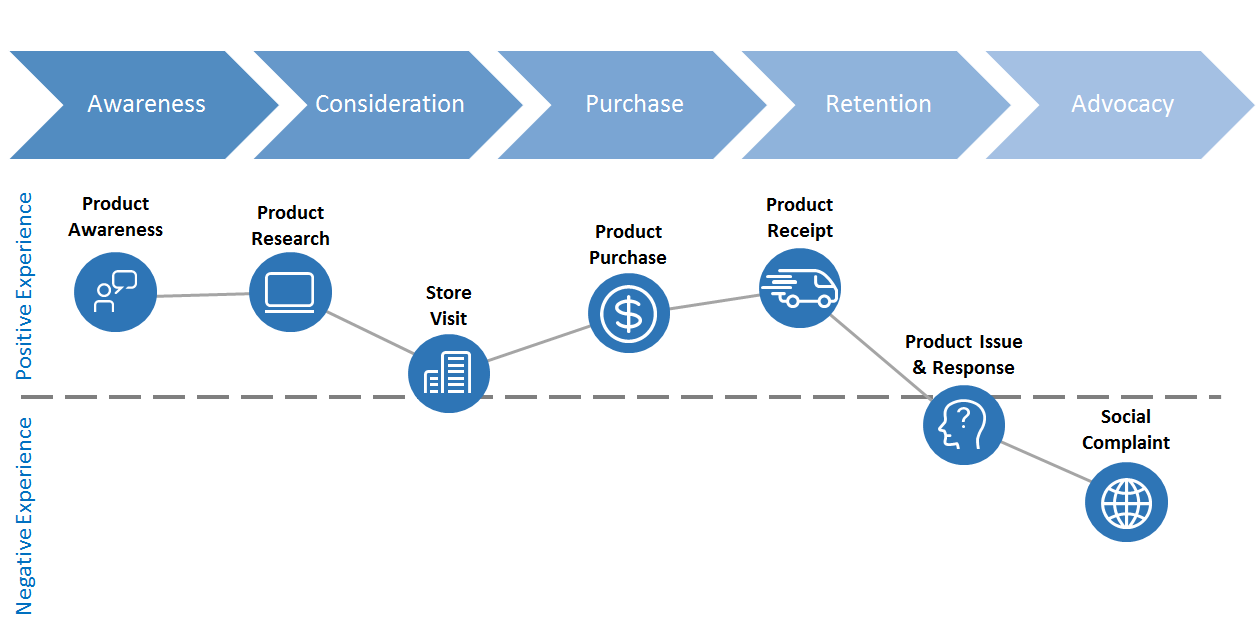
After the purchase, you need to focus on customer retention and loyalty. A customer journey map is a great way to visualize the different steps of the customer experience. It can help you identify pain points and optimize the customer experience at each stage.
Bonus tip: Customer journey maps require relevant customer data. To gather them faster, try using surveys following each key touchpoint, such as the post-purchase process or customer service interactions.
Step 7: Provide consistent CX across all touchpoints
Your B2B customers are interacting with you across multiple channels – online, on social media, via phone calls, or even in person. And they expect a consistent experience, no matter how or where they reach out to you.
Consistency is key when it comes to providing a great customer experience. If your customers have a positive experience with you on one channel, they should have the same positive experience on all other channels.
That’s where an omnichannel customer experience approach comes in.
By definition, an omnichannel strategy is designed to provide customers with an effortless and seamless experience that occurs within and between contact channels.
A successful omnichannel strategy includes such components as:
- Consistent branding and messaging across all channels
- A centralized customer base
- The ability to track customer interactions and journeys across all channels
- A personalized experience for each customer
- A focus on the customer, not the channel
Omnichannel isn’t a new concept, but it’s one that has gained traction in recent years as technology has advanced and customers have become more demanding. No wonder that in 2022, it stays among the main focuses of successful business-to-business companies.
Step 8: Keep your promises
In today’s world, customers expect businesses to be honest and transparent. They want to know what to expect and they want you to deliver on your promises. One way to do that is by setting realistic customer expectations from the start. If you’re not sure you can deliver on a promise, don’t make it.

It’s also important to keep your customers updated throughout the process. If there are any delays or changes, let them know as soon as possible.
Effective communication with the client requires clarity, conciseness, and honesty.
Step 9: Go extra mile
In a world where companies are constantly trying to one-up each other, it’s the little things that can make a big difference.
Going above and beyond for your customers is a great way to differentiate yourself from the competition and build loyalty.
It doesn’t have to be anything big or expensive. Sometimes, just a personal touch or a few extra steps can make all the difference. The customer experience is all about building relationships – creating a bond between your business and your customers that’s based on trust and respect.
Ask about their experience and make sure that they’re satisfied – if not, take steps to fix the problem. They need to be sure that they can count on your support team when things go wrong.
Step 10: Keep a long-term perspective
Lastly – the customer experience is not a one-time event. It’s an ongoing journey that should be continuously improved. As the world changes, so do the customer needs and expectations.
To provide the best possible experience, you need to think in the long term. To stay ahead of the curve, you need to be proactive and focused on the future. Developing a business strategy that takes customer lifecycle stages into account is crucial.
That way, you can anticipate the needs of your customers and be ready to provide the best possible experience. Keep up with industry trends, stay up-to-date on new technologies, and constantly look for ways to improve.
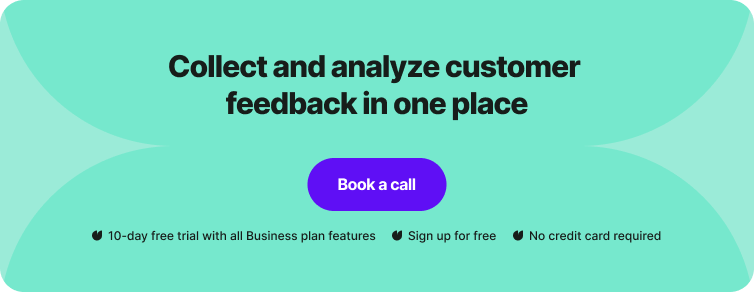
Get your CX strategy ready for the future with Survicate
Here it is – your successful B2B customer experience strategy. You can face many challenges before you find your secret code to motivate B2B customers into loyal, vocal advocates of your company.
But with these practices, we believe, you’ll be closer enough to succeed. Do you want to know more about your B2B customers before implementing your CX strategy? Create a Survicate survey with our 10-day free trial and start learning from your target group today.

.webp)






.svg)
.svg)
.svg)

.svg)


.svg)







.svg)




.svg)

















.svg)






























.svg)

.svg)
.svg)

.svg)



.svg)





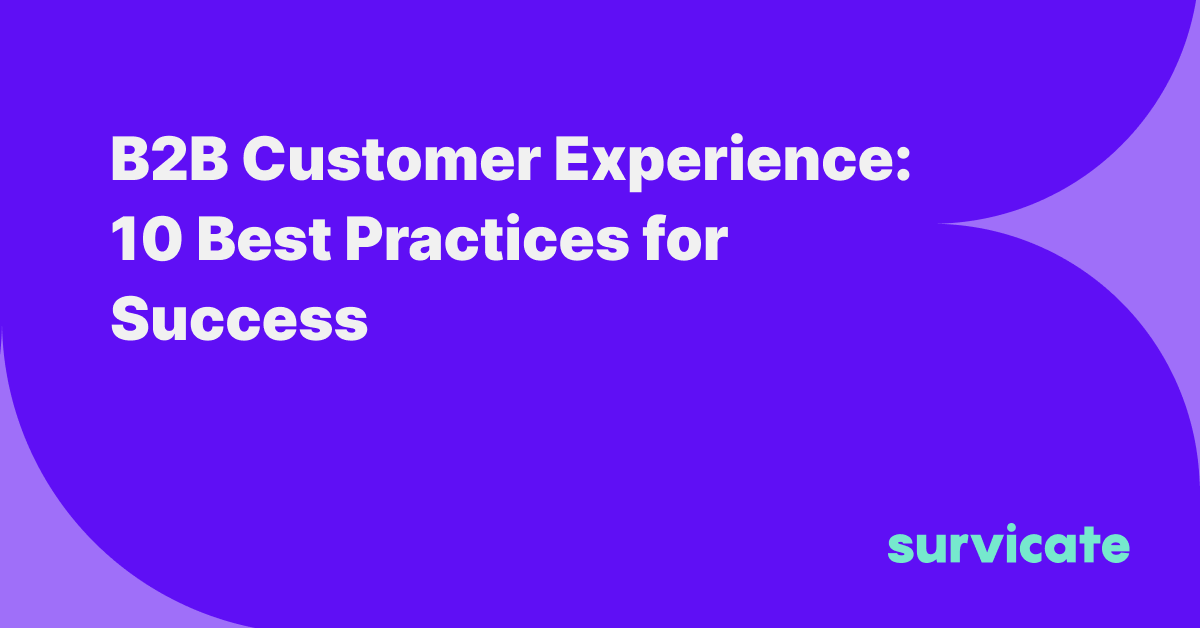

.svg)

.svg)
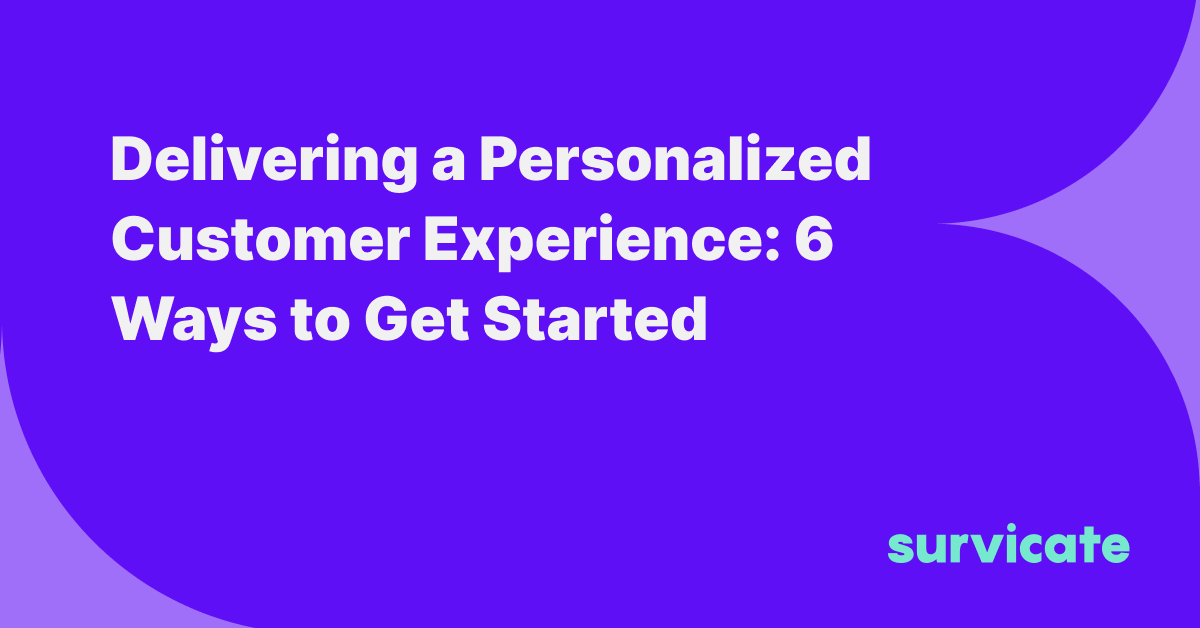
.png)
.jpg)

